Winter is a tough time for our beloved songbirds. Food and shelter are more difficult to find. Food is scarce because insects, the best source of nutrition, are in short supply; and shelter, from weather and predators, is harder to find when branches are bare. Too many suburban yards, with big expanses of lawn and too few trees and shrubs, make matters worse. In this season, perhaps even more than others, we can help.
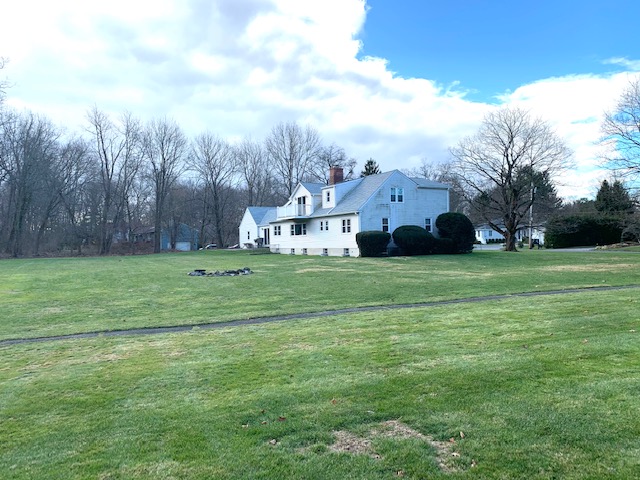
Scientists tell us that our songbirds are disappearing due to loss of “habitat” – places where food and shelter are available. Our parks, forests, and nature preserves are not enough to maintain bird populations, and there is not enough undeveloped land remaining for them. More than 83% of all land in the US is now privately owned, and 40 million acres of it is planted in turf grass, which is useless for birds. As a result, since 1970, we have lost one-third of the total bird population in the US and Canada. And the biggest losses, more than 90%, are in the once “common” bird species that should be found in our backyards!

Photo: Sav DeGiorgio
So, suburban yards are increasingly critical to bird survival. We can save birds just by landscaping our yards to provide food and shelter all year long. We can plant habitat!
Creating habitat is not difficult, and it is beautiful. Simply by planting more native trees and shrubs – lots more — and by leaving native leaves, grasses, and perennials in place all winter, we can provide a supply of food and shelter for birds while making our yards more interesting and attractive.
The bark of native trees – including oaks, birches, hickories, and white pines – hides over-wintering insects and becomes a hunting ground for many birds in winter. Chickadees, Nuthatches, and Woodpeckers all prowl tree bark looking for food.
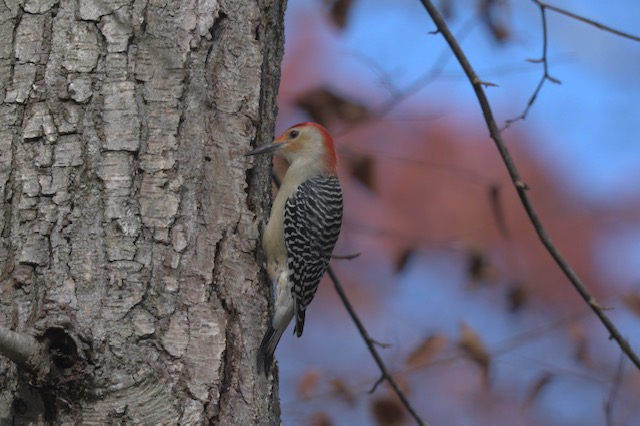
Photo: Sav DeGiorgio
The leaves that fall from native trees, especially oaks, hide seeds and insect larvae essential for birds’ winter survival. Allowing fallen leaves to remain under trees and on perennial beds all winter, rather than blowing and bagging them for disposal, provides a continuing food source for songbirds.
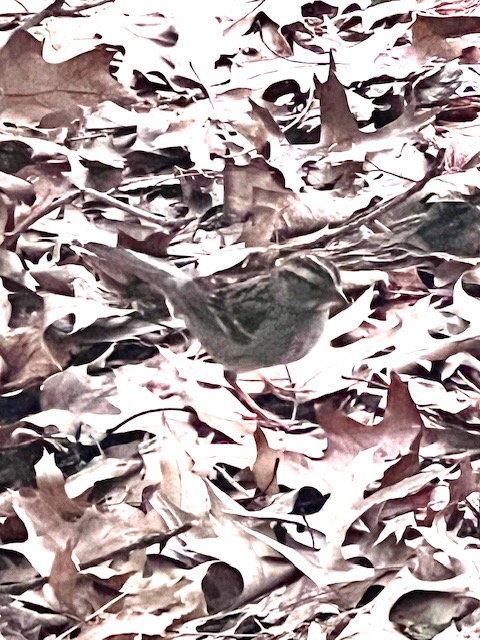
Native trees and shrubs with berries feed birds and add winter interest to the landscape. Winterberry, Common Juniper, and American Holly liven the garden with berries that birds love.
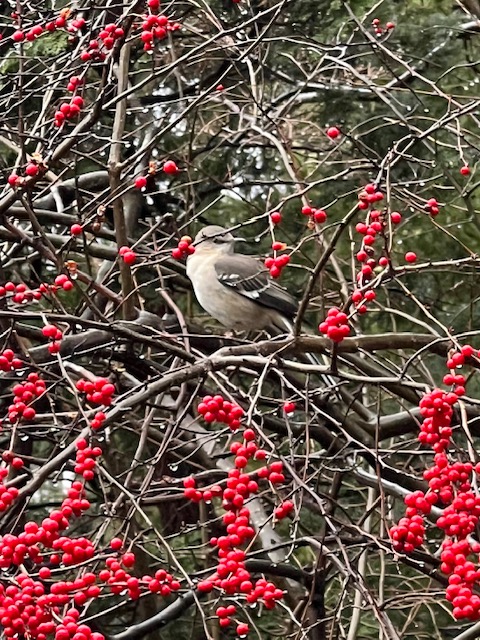

Photo: Sav DeGiorgio
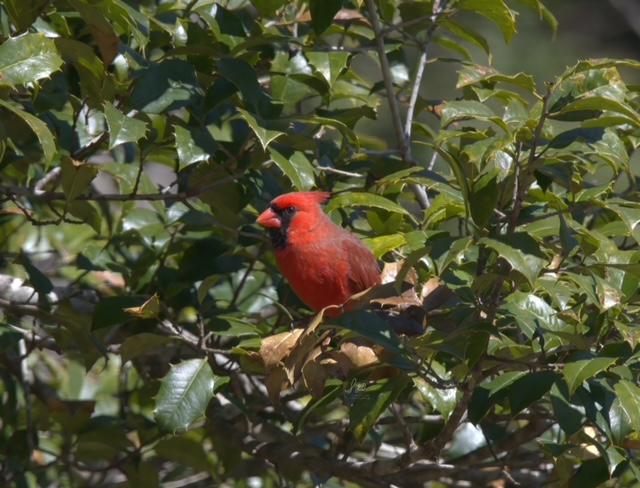
Photo: Sav DeGiorgio
The simple decision to leave ornamental grasses and flower stalks standing all winter, rather than cutting them down, is an easy way to provide food for winter birds. The changing colors and shapes of the plants are beautiful over the season, and birds will be frequent visitors there.
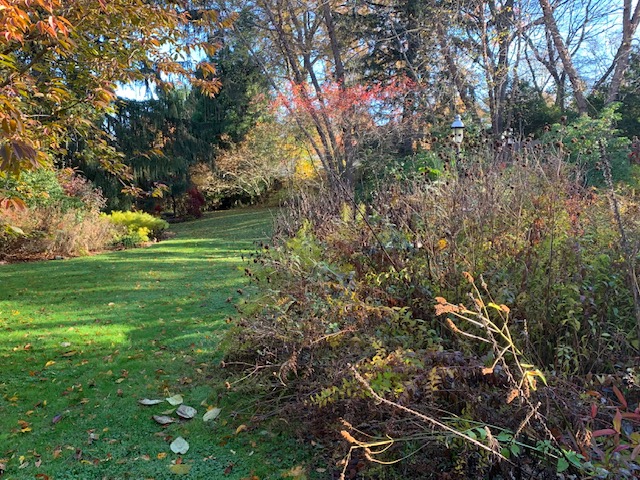

Winter birds also need shelter – places to hide from predators and to huddle in freezing temperatures. Open lawn, with a few tightly clipped shrubs, offers no protection.
Instead, a yard heavily planted with trees, shrubs, perennials, and grasses is the place birds want to be. Evergreen trees and shrubs offer great hiding places. Rhododendron, Mountain Laurel, Leucothoe, Juniper, and Inkberry are beautiful evergreen shrubs birds will appreciate. Deciduous shrubs that form a thicket of dense, twiggy stems, even without leaves, protect songbirds from hungry hawks. Shrubby St. John’s Wort, Dwarf Fothergilla, Winterberry, Bayberry, Oakleaf Hydrangea, and Virginia Sweetspire are all good examples of native shrubs that provide both seeds and hiding places in winter.

Many of us try to help birds by setting up backyard feeders. But most birds won’t stay out in the open while they feed. They “grab and go.” If you want birds to frequent and benefit from your feeder, you’ll need trees and shrubs — a thicket – nearby where they can hide while they eat.

Photo: Eric Rothenberg
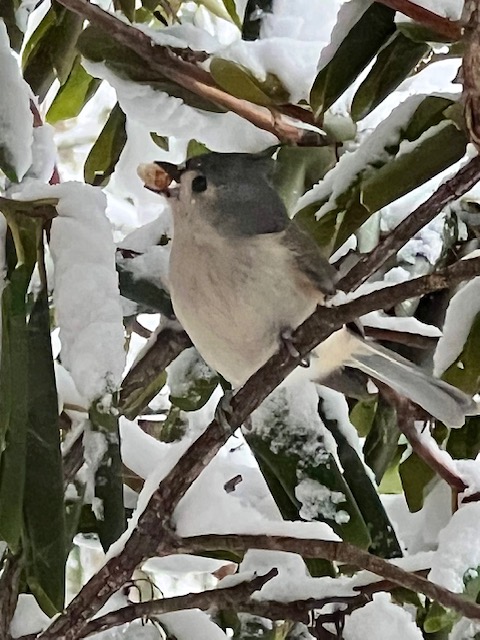
Planting habitat for birds in our own yards is no longer optional – it is urgent! We are running out of time. Bird counts in 2022 show that populations of more than half of all US bird species are continuing to decline. Birds are disappearing because they have nothing to eat and nowhere to hide. Suburban gardeners and homeowners can make a difference if we act now.
We must go from this:
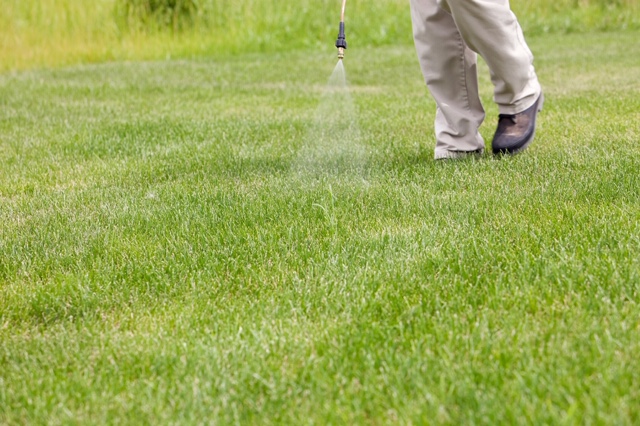
To this:
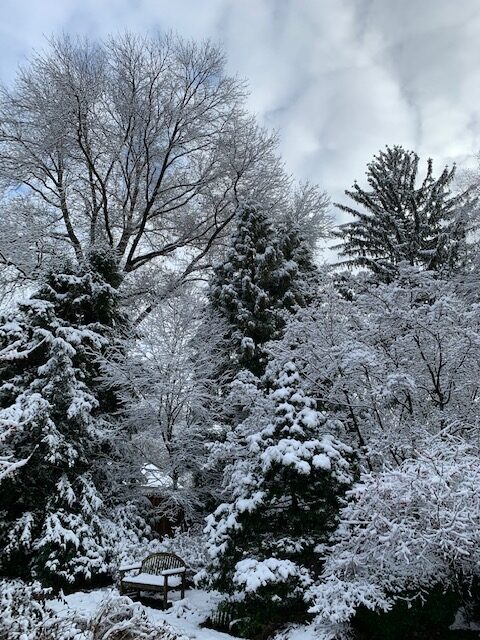
A special thank you to Sav DeGiorgio, Arborist for the Parks and Recreation Department of the Town of Greenburgh, for his beautiful bird photographs! See more of Sav’s photography on Instagram: @savwildlifephotography

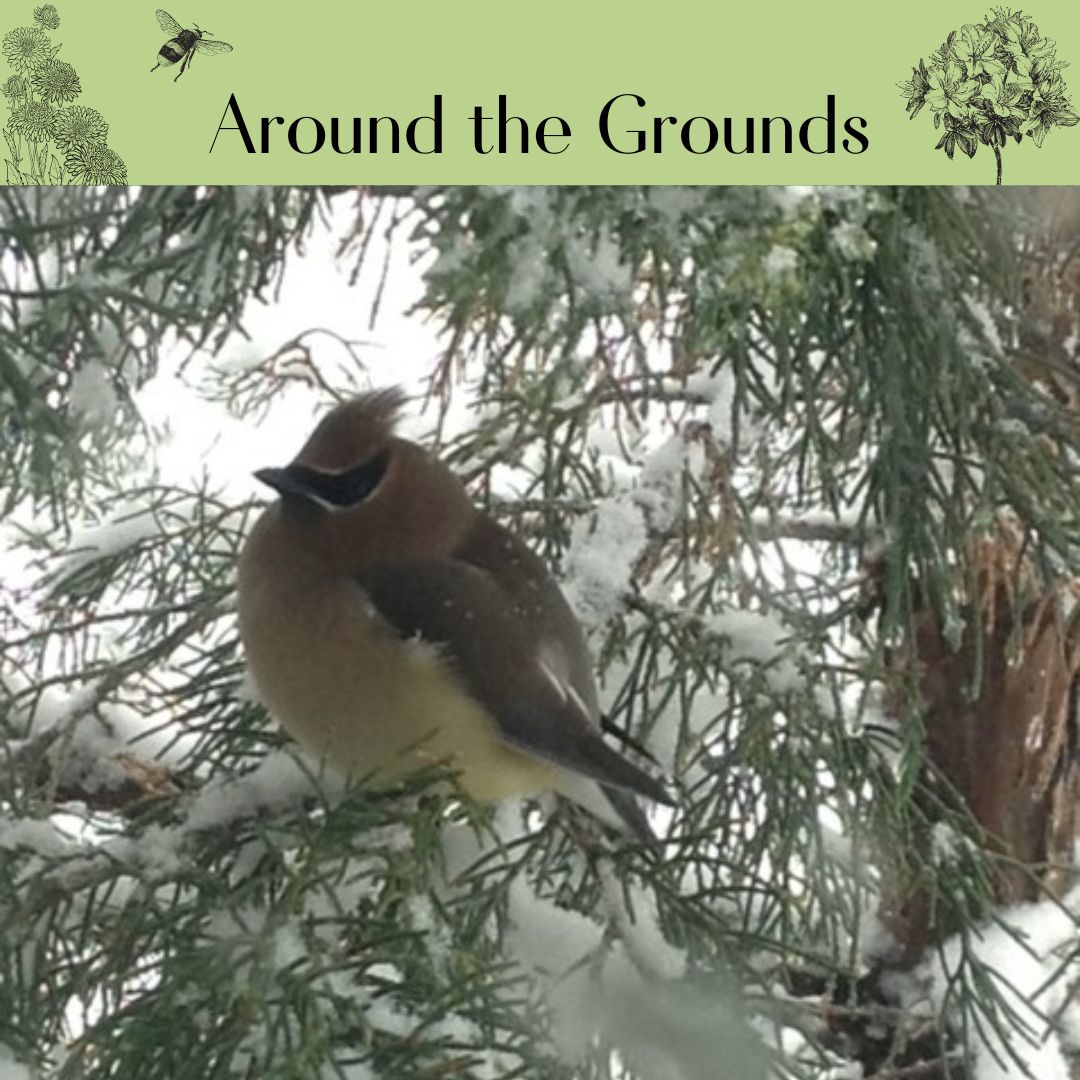
I applaud your urgency …. it IS needed!!
I get such a good feeling watching my winterberries slowly disappear. And callicarpa, aronia, ….
WaTER is also so needed in the winter for birds. I put out a fresh supply most every day!
Oh. Good point, Lynne. I just bought a little birdbath heater — plug it in and it just keeps water from freezing — it does not make it warm. Bird do need to find water all winter long.
Cathy,
The tone here is excellent and almost messianic! Right on target, this is what the Untermyer Gardens Conservancy is advocating in our Warblers on Warburton program. One sad indication of the state of things is when going to major nurseries, it is hard to buy an oak, tulip tree or maple. All they want to sell are small-scale ornamental trees. Steve
Thank you, Steve. I love the Warblers on Warburton theme. Hard to spot a warbler these days, and they should be more common than house sparrows. There are good suppliers for native trees, but I like asking the big commercial nurseries first and then letting them know we will go elsewhere if they can’t supply the best natives — we can pressure them to change their supply by letting them know the demand is changing. We also have to educate homeowners that big trees are beneficial and not dangerous if sited and cared for properly. People are becoming fearful of trees and that is a big mistake.
Cathy,
Great blog!
We could not agree more and by the way, your approach is much more beautiful to the eye. The creativity possible with native plants is limitless and it is so wonderful seeing and knowing that critters of all types have more opportunity to thrive within them.
Great photos from Sav!
Hope we get some snow soon.
Jim
Thank you, Jim. Personally, I’m finding big expanses of lawn visually boring in home landscapes, so a dense planting of trees and shrubs improves “curb appeal” to my eye. I think — and hope — that suburban fashion is changing for the better.
I loved this post; it was super straight forward for us beginner folks. The tagline of “something to eat and somewhere to hide” is easy to remember!
Thanks for the comment — maybe we should put the message on t-shirts!
Excellent! You continue to demonstrate that sustainable planting is much more beautiful than the lawns and plants that people are used to.
Thank you! The recent news about bird populations and the insect “apocalypse” make me feel the need to get this message out urgently! Thanks for supporting it!